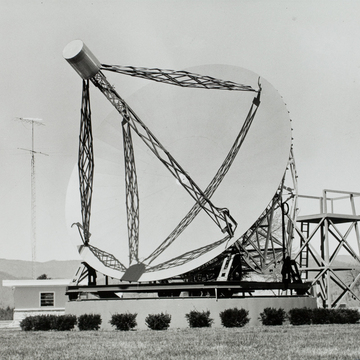Grote Reber constructed this parabolic radio telescope, which has a 31-foot-5-inch reflector made from seventy-two radial wooden rafters and is covered with galvanized steel, in his backyard in Wheaton, Illinois, in 1937. With it, he was able to confirm that radio waves emanated from the Milky Way and could aid in astronomical research. In 1957 the National Radio Astronomy Observatory acquired his telescope, moved it here, and reconstructed it under Reber's supervision. Because of the telescope's seminal role in helping understand the universe, in 1989 the secretary of the interior declared it a National Historic Landmark.
The still-operable telescope is on exhibit at the National Radio Astronomy Observatory, a huge facility that looks as if it belongs in space instead of in a peaceful, mountain-ringed valley. Several later, larger telescopes, including one taller than the Statue of Liberty, dominate the landscape. Associated Universities, Inc., in cooperation with the National Science Foundation, operates the state-of-the-art facility. Here qualified scientists explore the universe from a spot where interference from other radio signals is minimal. Informative tours are given, and cameras are welcome.














